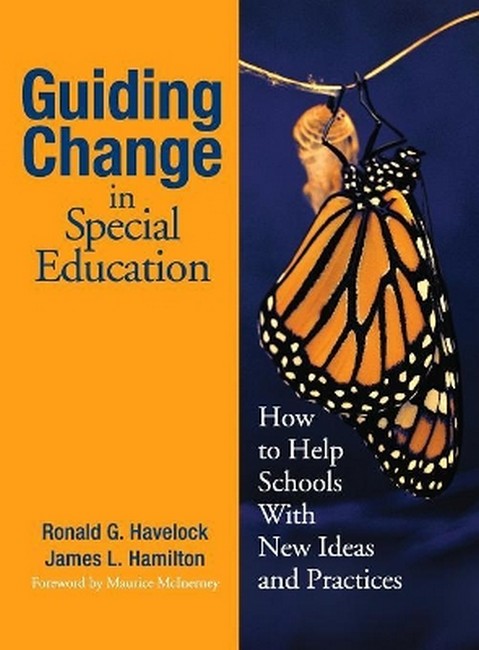Ronald G. Havelock is an internationally recognized authority on knowledge utilization. As professor and research scientist at the University of Michigan and later American University in Washington, D.C., he has directed studies of knowledge use, technology transfer, and the planning of change in many fields. His 1969 book, Planning for Innovation through the Dissemination and Utilization of Knowledge, is widely regarded as a landmark work on that subject. Subsequent books include A Guide to Innovation in Education (1970), Training for Change Agents with Mary C. Havelock (1973), The Change Agent's Guide to Innovation (1973), 2nd Ed with S. Zlotolow (1995), Solving Educational Problems, The Theory and Reality of Innovation in Developing Countries, with A. Michael Huberman (1978). His broad range of work includes studies of research use in advanced technology, education, and medicine. During the 1990's he served as an advisor to the American Association for the Advancement of Science on their long-term project to improve science education. For the last five years he has designed training materials and provided strategic advice to the American Institutes of Research, Washington, D.C. on programs to assist schools nationwide in the adoption of new programs in special education. He is currently preparing a book on the nature of human progress, summarizing what he has learned over a 40 year career studying how scientific knowledge has evolved and how it has impacted society. Dr. James Hamilton is currently a managing director at the American Institutes for Research (AIR). He is Principal Investigator of the ACCESS Center, which is providing technical assistance to states and school districts to help students with disabilities gain access to the general education curriculum. Previously, he was Project Director of the Elementary and Middle Schools Technical Assistance Center, which developed and evaluated a technical assistance model aimed at improving outcomes for students with disabilities in elementary and middle schools. Before joining AIR, Dr. Hamilton held various positions, over a 20-year period, at the Office of Special Education Programs (OSEP) in the U.S. Department of Education. While at OSEP, he worked in the areas of research, leadership personnel training, early childhood, technical assistance and dissemination. He held several OSEP positions, including Director of the Division of Educational Services, Chief of the Early Childhood Branch, Chief of the Leadership Personnel Branch, and Chief of the Research Projects Branch. During his tenure in the Department of Education, Dr. Hamilton was a member (and chair for a year) of the Joint Dissemination Review Panel and the Program Effectiveness Panel. Prior to serving in the U.S. Department of Education, Dr. Hamilton was a classroom teacher, a senior research associate at the Research Institute for Educational Problems, and the Coordinator of two graduate programs at Lesley University. He received his Ph.D. from the University of Missouri in 1972. His primary interests include special education policy, early childhood, and identification and dissemination of effective practices.
Request Academic Copy
Please copy the ISBN for submitting review copy form
Description
Foreword - Maurice McInerney Acknowledgments About the Authors Introduction Case Study Stage 1. Care: Establishing the Need for Action Someone Must Care Enough to Make It All Worthwhile A Three-Step Model of Change: Unfreeze-Move-Refreeze How School Systems Show (and Don't Show) That They Are in Trouble Inside Versus Outside Forces Linking Agent as Connector and Orchestrator of Forces Whose Responsibility? The Value Issues in Helping Care: Summary Stage 2. Relate: Building a Relationship Build a Good Relationship With the People You Are Trying to Help Diagram Your School or School District as a Social Network Linker Configurations How to Size Up Your Relationship Final Word on Relationship Building Relate: Summary Stage 3. Examine: Understanding the Problem Turn Cares Into Problems You Can Solve Making a Good Diagnosis The Data Collection Phase The Analytic Phase Making a Diagnostic Inventory Systemic Analysis: Understanding the System A Data Collection Process A Set of Rating Dimensions Creating a Diagnostic Matrix/Checklist That Points to Solutions Integrating Diagnosis With the Other Stages Examine: Summary Stage 4. Acquire: Seeking and Finding Relevant Resources The Money Theory of Change The People Theory of Change The Knowledge Theory of Change Acquiring Materials (= Packaged Knowledge) Acquire: Summary Stage 5. Try: Moving From Knowledge to Action Giving a Fair Trial to a Well-Considered Solution Pretrial Feasibility Testing: Comparing and Selecting the Best Plan the Implementation What Is the Process? How Can You Evaluate Process? What Are the Outcomes? Can You Measure Outcomes? Cautions on Evaluation Using the Results Sharing With Your Team Try: Summary Stage 6. Extend: Gaining Deeper and Wider Acceptance Issues About Adoption and Diffusion Solidifying Adoption at the Trial Site (Keeping Going) Expanding Change at the Trial Site Extending the Trial to Proximate Sites (Follow-On Adoption) Extending Adoption to the Larger System Variations of the Adoption Curve Going Wider: Strategies and Tactics (The Second Stage of Diffusion) Extend: Summary Stage 7. Renew: Encouraging Ongoing Change How Do Systems Absorb Changes? Improve the Process Keep the Change Fresh Create a Self-Renewal Capacity From Item Change to System Change Installing the Change Function Terminating and Moving On Renew: Summary Summary and Synthesis References Index

